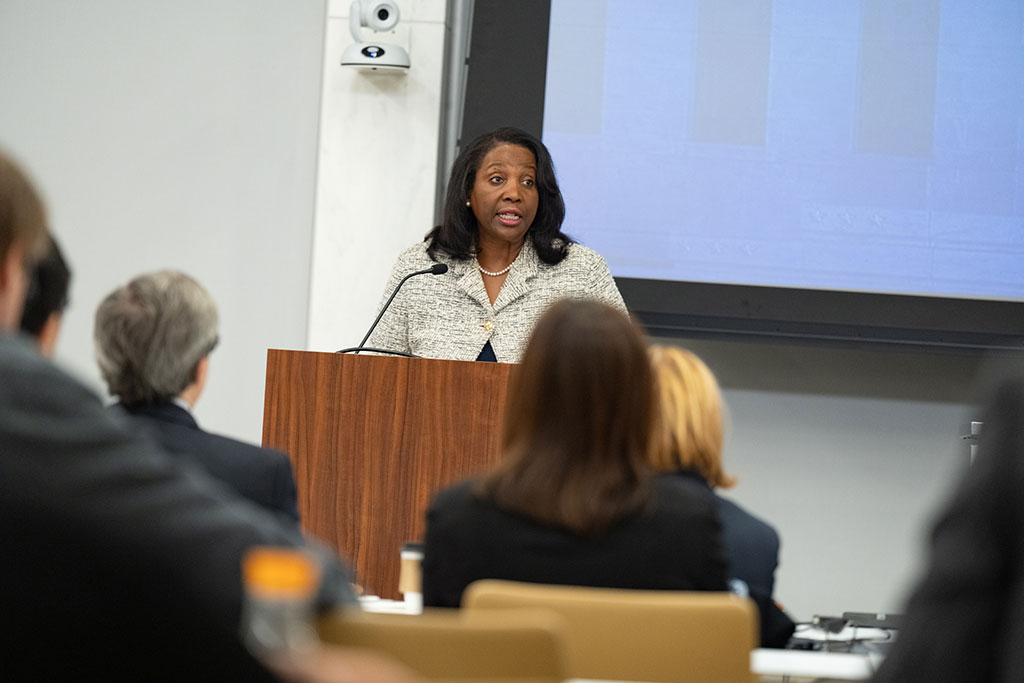Communication silos are a major pitfall when managing BI losses, says NetDiligence panel

By Isha Marathe
Feb 13 - (The Insurer) - A lack of clear communication between each layer of a tower as well as other stakeholders is often the most common pitfall when managing a business interruption (BI) incident, panellists at the NetDiligence Cyber Risk Summit said on Wednesday.
Deborah Hirschorn, managing director and US cyber and technology claims leader at Lockton, said that all parties, including forensic accountants, brokers, underwriters and clients, should be discussing how to mitigate the loss in the event of BI claim.
“It’s something to [talk] about … especially during peacetime,” Hirschorn said.
“It’s harder to do stuff in the middle of the crisis [when] clients are saying, ‘We thought this was covered. Don’t you understand my business?’ Those are not fun conversations.”
These conversations may look different depending on the vertical because BI claims are so industry-specific, but some commonalities include setting timeline expectations with clients, reporting a loss to all layers regardless of whether it will reach them, and looping in the various forensic accountants that different layers might appoint.
‘No one knows what’s been paid’
Oftentimes, putting the entire burden of communicating across lines falls on the broker, which causes its own set of issues, said Danielle Roth, practice leader and head of cyber claims North America at Axa XL.
“This to me is the most important – everyone [should] have the same information at the same time,” she said. And the broker does sit in the perfect place to “take a firm hand and kind of corral all the layers”, Roth said.
In the absence of early conversations about the nature of the incident and the responsibility each layer is able to take on, things can go sideways quickly, Roth warned.
“Sometimes the primary is paying its money on the first-party cost, breach counsel, forensic, maybe a cyber extortion payment – then there’s that little amount at the top, a million or maybe $2mn, and they figure ‘OK, it’s going to business interruption, we’re not going to allocate what we are paying,’” she said.
“That creates issues all the way up the tower – not just for the carriers, but for the insurers and forensic accountants too because no one knows what's been paid. You're starting to reinvent the wheel on each layer.”
She added that this is a "really easy way" to annoy an insurer.
‘When in doubt – report, report, report’
The importance of communication doesn’t stop at the primary layer, said Pat Groshong, cyber claims director at Berkley Cyber Risk Solutions.
For the excess layer, which often has to make decisions on a more case-by-case basis, an important choice to make is whether they need to bring in their own forensic accountant.
“Timing of the retention of the forensic accountant by the primary layer would be important,” Groshong said. “If early on we were advised that, we might join in, depending on the [forensic] accountant and the situation and the absence of factors.”
Groshong recalled a recent situation where a claim came and despite repeatedly asking for updates and reaching out to the broker, he did not receive a response.
He said he was then handed a proof of loss several months later that exceeded his position in the tower. "That's an easy decision to make to have to get a forensic accountant involved,” he added.
In this situation, however, forensic accountants are at a disadvantage because they are in the dark about what the accounts in other layers have been working on.
Groshong is aware that in a BI situation for the primary and first excess layers the instructions are often “just get us out of it”, but that strategy makes it harder for the higher layers.
“It’s understandable from a financial standpoint that you don’t want to spend a lot of money drilling down if you’re going to be paying your limits anyway, whereas, in a higher layer, you really need a little bit more detailed analysis from the forensic accountant.”
Unlike in other lines like auto, where one might worry about reporting in advance for fear of a premium spike, for BI it is mostly harmless to report early, said Meredith Ponce, senior vice president and insurance and claims counsel at Lockton.
“You never know where it is going to end up in the tower – when in doubt, report, report, report,” she said.
“The worst-case scenario is that the carrier opens the file, and in 90 days, they'll close it. You never know when something might happen … they could get hit with a large amount on a class action settlement – all of a sudden [an excess carrier is] back in the mix.”
Ponce added: “There's a chain that you have to go through to be able to get money put up on a file. And if you're caught sleeping at the wheel and a broker comes to you and says, ‘Hey, we have to put the money up’ [and] they haven't gone to the people that they need to go to, they're going to be in hot water. So it's really important to keep your eye on the prize."





